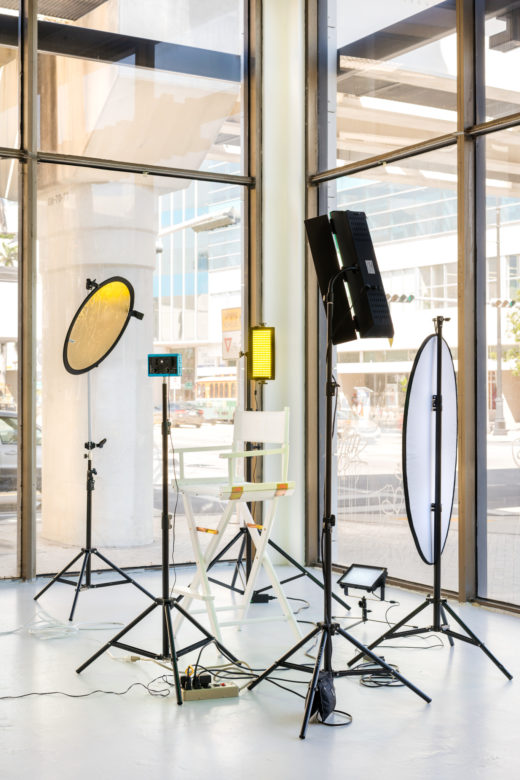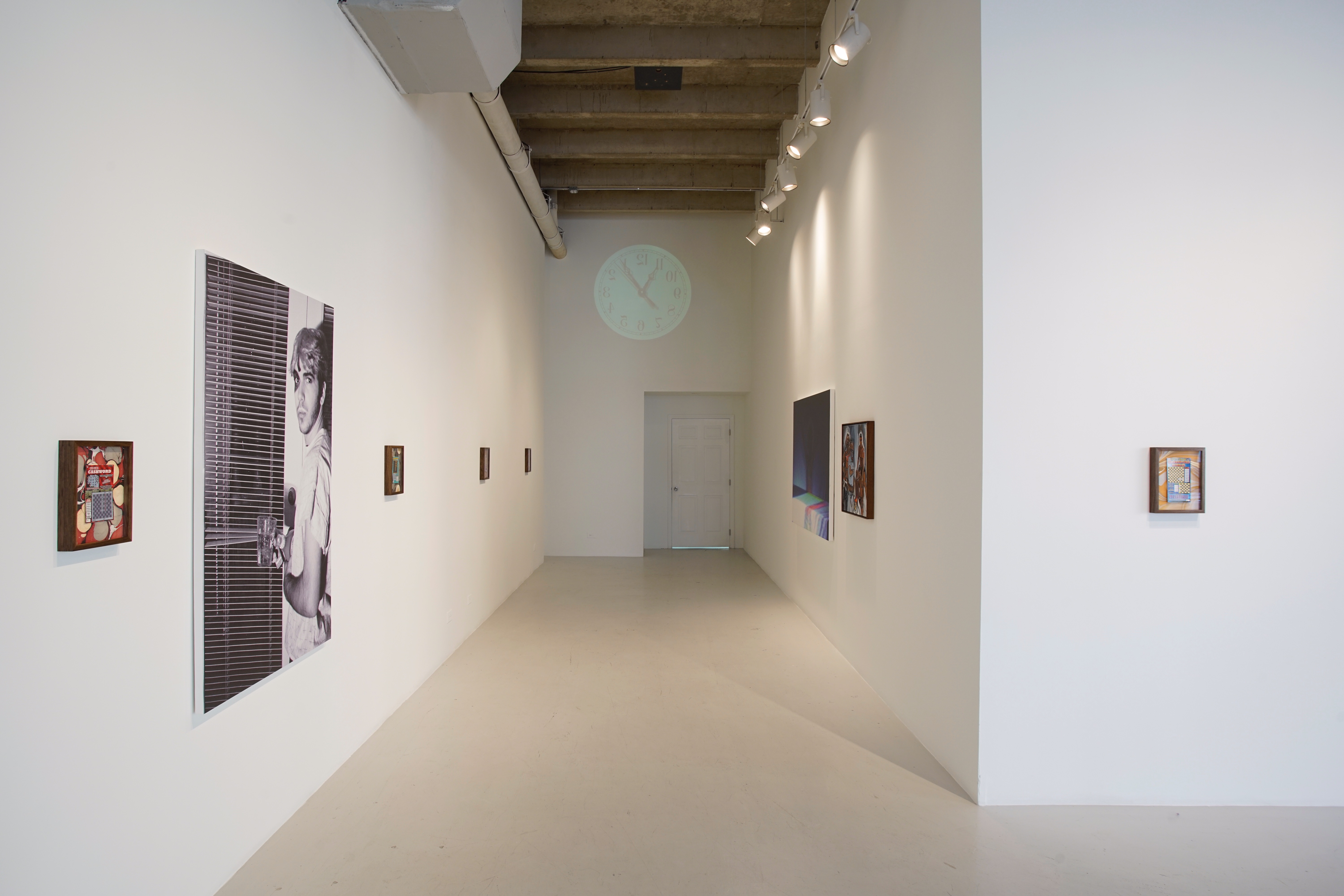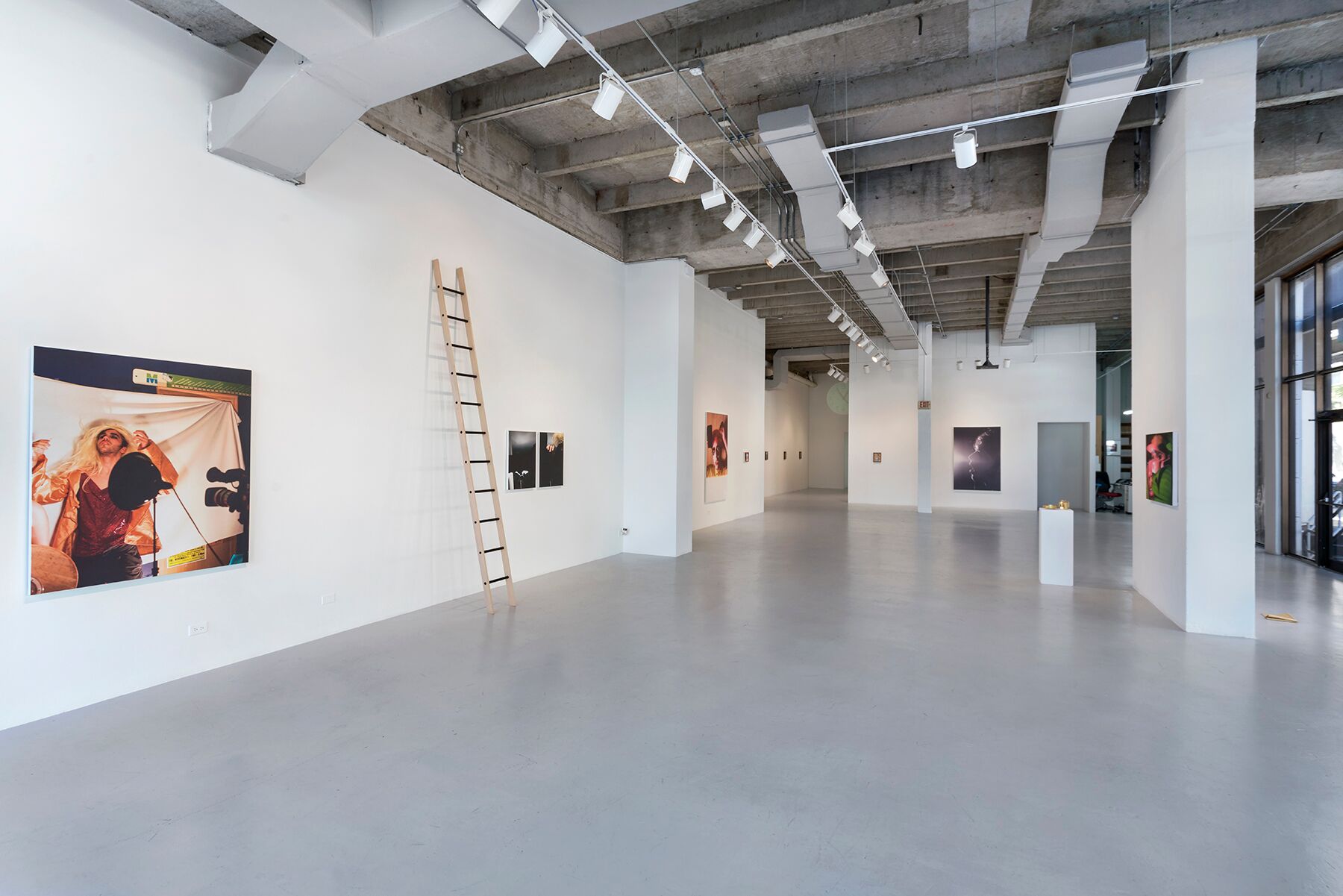- Dale Zine Miami: Mall as Community as Art

- Everybody Rides for Free: a Conversation with Carsten Höller
REVIEW: “INTRO” by Alan Gutierrez at CCE Miami
Nicole Doran
 Alan Gutierrez, INTRO, installation view. Photograph by Zachary Balbe.
Alan Gutierrez, INTRO, installation view. Photograph by Zachary Balbe.
March 8 – April 18 at Centro Cultural Español de Cooperacion Iberoamericana (with “Special Guests” Math Bass, Domingo Castillo, Charles Hollis Jones, Albert Moya, Amanda Ross-Ho and Metta Tommerup)
At the cross section of 14th Street and Biscayne Boulevard, there’s a resplendently sprawling space, occupied by CCE Miami (the Spanish Cultural Center for Ibero-American Cooperation). Currently on view in its lavish, sun-drenched exhibition space, is Alan Gutierrez’s solo show, “INTRO”, which also features work by “special guests”, as described in an accompanying brochure. This particular brand of merchandising and rhizomatic curating is Gutierrez’s strong suit. It’s clear from its cover, adorned with a makeup-smeared Gutierrez and a comic illustration by Will McPhail, that the theme is showbiz, baby.
“INTRO” proposes that beauty and artistic creativity are their own seductive endeavors of showmanship. Works throughout point to a shift in our collective relationship to politics under the burden of ever-demanding daily rituals our generation performs, crafting and checking social media feeds.
Gutierrez seamlessly ties together performativity found in mid-century, Hollywood-era film noir and the dystopian narratives of the present day. Entering the space, there’s a sense of old Hollywood charm, most notably with designer Charles Hollis Jones’s brass smoking set (1968), which is the kind of communal cigarette stand you’d have seen at a cocktail party at Cary Grant or Gregory Peck’s house. Today this gesture would be considered unhealthy, vile, or charmingly vintage. It’s a mark of how far we’ve come since the 1950s, but Gutierrez draws us back to the spotlight.
 Alan Gutierez, INTRO, installation view. Photograph by Zachary Balber
Alan Gutierez, INTRO, installation view. Photograph by Zachary Balber
 Alan Gutierez, “INTRO”, installation view. Photograph by Zachary Balber
Alan Gutierez, “INTRO”, installation view. Photograph by Zachary Balber
Nearby, one finds Gutierrez’s vinyl newspaper, a sculptural, branded relic from his past performances, usually used to block the rain. Here, it’s lifeless, as if thrown into the show by the neighborhood postman. We can see Gutierrez’s relationship with time as an encapsulating both future and past events. This waterproof newspaper connects to allegorical motifs of characters running in the rain in Hollywood movies, indicating the moment of climax or signaling impending, unspoken doom.
Elsewhere, a director’s chair flanks a flat-screen TV, surrounded by professional production lighting. On the screen, a one-hundred-ninety-two-word “simple proclamation” (also printed in the show’s brochure text) scrolls like end-credits, spelling out the artist’s decree that the exhibition embrace “the hyperbolic nature of entertainment… so as to show reality in its most truthful state.” These sentiments are proven by another video, Albert Moya’s Baton, 2018, a short film in which a dystopian, post-apocalyptic society of young men are ruled by a cruel and absurd leader. Given our own present-day Trumpian dystopia, there’s nothing unrealistic about Baton’s sci-fi mysticism.
Gutierrez’s new paintings, presented here for the first time, are either titled untitled (video still) or untitled (production still), 2017-2018. They’re old photographs of a young Gutierrez, newly printed on stretched canvas, allowing Gutierrez, both past and present, to perform their objectification. The more colorful among them recall a ‘behind-the-scene view’, exposing the staging of one’s persona, whereas black-and-white images recall the highly stylized imagery of film noir. Artworks by Math Bass, Domingo Castillo and Amanda Ross-Ho are scattered between. All are strangely cinematic, cynical and bizarre.
Bass’s eleven-foot ladder to nowhere, Eleven Rung Rise (2014), warns that social climbing to success, strategically updating our media platforms, gets us nowhere. Ross-Ho’s video projection of a clock ticking in reverse (Untitled Reverse Movement, 2016), is an allegory for lost labor and information, illustrating our habitual fondness for passing time online rather than addressing the task at hand. Under the projected clock hang Castillo’s painted losing lottery tickets, MATA ALMA (DIRECTORS CUT), 2017-8, two-dollar Cash Word Doubler scratch-offs matted on trippy, marbleized paper. He has painted the discarded word puzzles to perform DADA statements such as “never stable cosmic obstacle” or “mincemeat mall, global pipeline”. Simple yet subversive acts of escapism are Castillo’s form of resistance.
“INTRO” harnesses darkly cynical, dystopian narratives, as antidote to our anxieties but we are left questioning, is anything real or is this life just another movie? Hyper-anxiety with social standing has found it’s ultimate expression in digital space, where we endlessly amplify the quality and quantity of our online avatars, always ready for their next close-up.
Nicole Doran is an artist and writer living and working in Miami, Florida.









